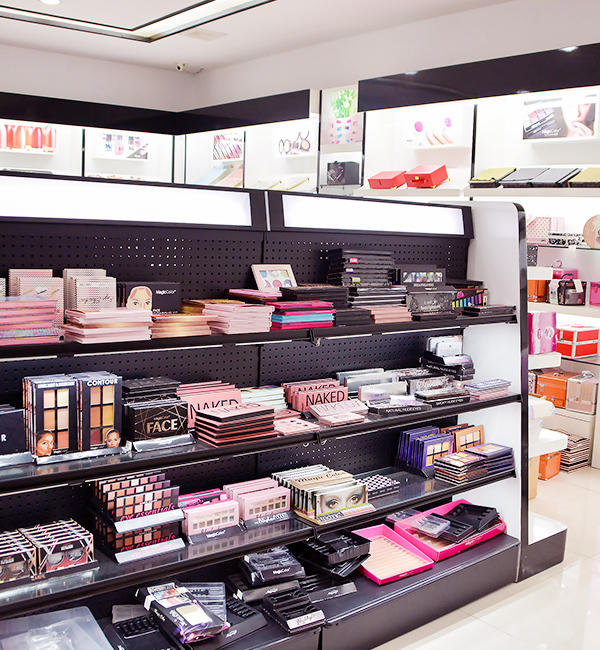Eyeshadow Manufacturers
-

High Quality 12-Color Iridescent Matte Eyeshadow Palette PD22139
Versatile 12-Color Eyeshadow Palette, your ultimate tool for artistic expression in makeup. With this palette, the possibilities a...
-

Design Sale Easy to Apply Silky Multiuse Color Fat Pen EL23052
Silky Multiuse Color Fat Pen, a game-changer in your makeup routine. Experience the luxury of a smooth, velvety texture that effor...
-

High Quality Highgloss 24h Long-Lasting Eyeshadowpencit EL23048
Highgloss 24h Long-Lasting Eyeshadowpencil, the ultimate game-changer in your makeup arsenal. Experience the freedom of all-day we...
-

Sale High Quality 54 Color Eye Shadow Paper PD23254A
Vibrant and versatile 54 Color Eye Shadow Paper palette, a must-have for every makeup enthusiast's collection. Dive into a world o...
-

Miss Young Supply Cheap Eye Shadow Palette Without Watermark On Paper PD23227
Introducing the Miss Young Eye Shadow Palette Without Watermark On Paper, a stunning collection of 51 vibrant shades meticulously ...
-

Miss Young High Quality Eye Shadow Palette Without Watermark On Paper PD23225
Introducing the Miss Young Eye Shadow Palette Without Watermark On Paper, a must-have collection designed to unleash your inner ar...
-

Miss Young Sale Cheap Eye Shadow Palette Without Watermark On Paper PD23224
Introducing the Miss Young Eye Shadow Palette Without Watermark On Paper, a versatile collection featuring an array of captivating...
-

Miss Young Custom Eye Shadow Palette Without Watermark On Paper For Sale PD23223
The Miss Young Eye Shadow Palette Without Watermark On Paper, an extensive collection featuring 56 dazzling shades meticulously cu...
-

Miss Young Wholesale Eye Shadow Palette Without Watermark On Paper PD23221
Introducing the Miss Young Eye Shadow Palette Without Watermark On Paper, a versatile collection of rich and vibrant shades meticu...
-

Miss Young Sale Supply Eye Shadow Palette Without Watermark On Paper PD23219
Introducing the Miss Young Eye Shadow Palette, a stunning collection of 19 captivating shades designed to inspire endless creativi...
-

Miss Young 36 colors Eye Shadow Palette Without Watermark On Paper in China PD23218
Introducing the Miss Young Eye Shadow Palette, a captivating collection of 36 vibrant shades meticulously selected to ignite your ...
-

Miss Young Sale High Quality Eye Shadow Palette Without Watermark On Paper PD23217
Introducing the Miss Young Eye Shadow Palette, a breathtaking collection featuring 49 mesmerizing shades meticulously curated to i...
MAGIC COLOR COSMETIC
We are leading Eyeshadow supplier and company in China which specializing in providing private labeling, OEM and ODM services for a wide range of global customers. Magic color has the capacity of manufacturing a wide range of high-quality color cosmetics, gift sets, powder, eyeshadow, lipsticks, nail polishes, mascaras and eyeliners. As the name behind many prestigious cosmetic brands, Magic color is able to help you develop high-quality products under your own private labels. We also custom wholesale Eyeshadow. We play a important role as Eyeshadow wholesaler and exporter in China.
Jinhua Magic Color Cosmetic Co., Ltd. has the capacity of manufacturing a wide range of high-quality color cosmetics, gift sets, powder, eyeshadow, lipsticks, nail polishes, mascaras and eyeliners. As the name behind many prestigious cosmetic brands, Magic color is able to help you develop high-quality Glitter Eyeshadow Palette Manufacturers and Eyeshadow suppliers in China, which custom cosmetic products under your own private labels. We are a one-stop GMP-compliant cosmetic manufacturer in China, specializing in providing private labeling, OEM and ODM services for a wide range of global customers. Located in Jinhua of China, near Ningbo and Shanghai, our company has more than 15 production lines and covers an area of 25,000 square meters. We have passed BSCI, SEDEX, ISO22716, GMPC(Good Manufacturing Practices (GMP) of cosmetic products) certification. We have professional Eyeshadow factory, we also offer wholesale in bulk with low MOQ. White label, contact manufacturing optional. Welcome to visit.
News
-
The Evolution of Pink Eye Hydrating Concealer: Transforming Beauty Standards
In the fast-paced world of cosmetics, innovation continues to redefine beauty standards and consumer...
-
The Rise of Waterproof Concealer: Innovations and Trends in the Beauty Industry
The beauty industry is constantly evolving, with consumers demanding products that not only enhance ...
-
The Rise of the Hydrating Concealer Palette: Revolutionizing Beauty Routines
In the ever-evolving world of cosmetics, the hydrating concealer palette has emerged as a transforma...
-
Jinhua Magic Color Cosmetic Co., Ltd. Participates in the Asia Pacific Cosmoprof Exhibition!
We are excited to announce that Jinhua Magic Color Cosmetic Co., Ltd. will be showcasing at the high...

 English
English 中文简体
中文简体 Español
Español русский
русский Deutsch
Deutsch عربى
عربى
 Innovation Team
Innovation Team Patented Technology
Patented Technology Quality Assurance
Quality Assurance Efficient Response
Efficient Response
























